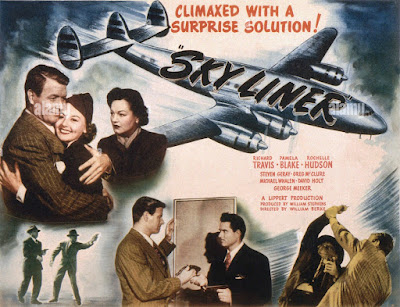Wilke's ego is stroked with anticipation of a grand story about himself. He is eerily cordial to the reporter as his skeptical gang is not sure whether he might order Nielson shot from across the table. In a powerfully tense scene, before the interview starts, Wilke sets the table by verbally flattening his skittish partner, Paul Richards, like a placemat—insulting his panic attack that ruined a previous robbery. Richards is seething with rage but has not yet decided how to retaliate. Their friendship has run its course. Nielson ultimately gets a story but not the one he intended.
Most will note the familiar television lead actors in this unknown crime film, a film suggesting it has noir roots. A volunteer gang member, James Best, opens the film with his usual good old country boy flavor. He praises Wilke for his morale boost to the town. Nielson is adequate as a one-dimensional character. He was much “bigger” on the small screen during his dramatic era. Miller's career was sparse as is her emotional range here. She is the weak link in the cast. The standout in the film, the aforementioned Richards, is the mentally unpredictable polar opposite of venerable film actor, Jay C. Flippen, the level-headed veteran of the gang. Filming never attempts to capture Richards' menacing, aloof stare that was somewhat of his trademark in sinister roles. But what he does in wide-eyed pleasure about halfway into the film gets everyone's attention. It is the only shocking moment in this dialogue-heavy film. The genuine article is Edward Andrews, inhabiting his character as a sweaty sheriff.
This probably is the only film with two actors of the opposite sex named Leslie. For her uncredited role, Leslie Parrish plays an undefined character sitting on the floor, oddly clinging to Richards' leg in total devotion. IMBD dot com, for one, incorrectly identifies Parrish, giving her two different actresses' names.
Note: Directed by David Friedkin, this eighty-six-minute film would appear to be a television production with its low budget, flat camera work by Harold J. Marzorati, and highly visible actors of the period. The music is by André Previn but the score remains, for the most part, anonymous. Metro-Goldwyn-Mayer distributed the film but it did not turn a profit. Today, it might be considered a lost treasure by younger viewers, not realizing Nielson did anything else but Lt. Frank Drebin.



